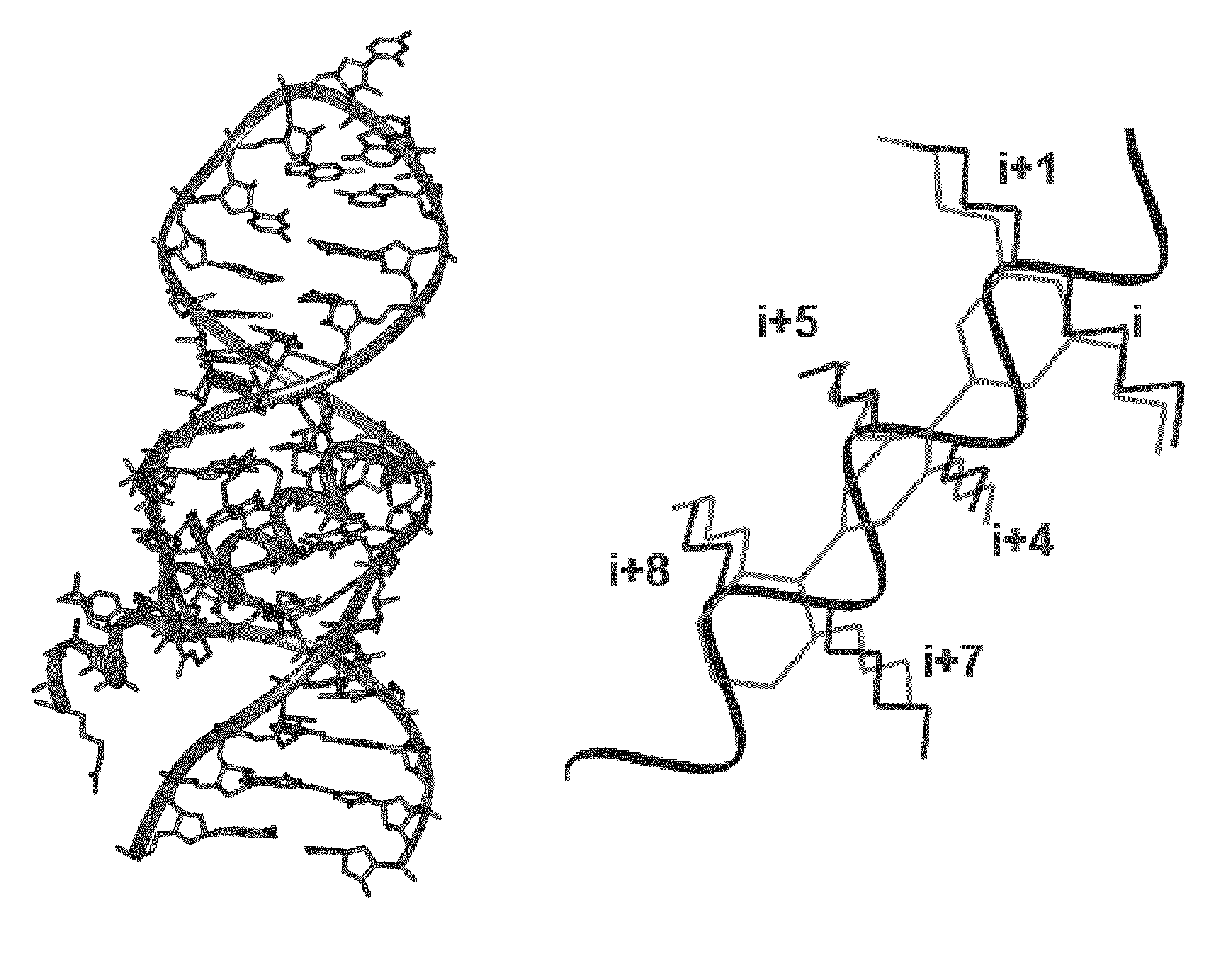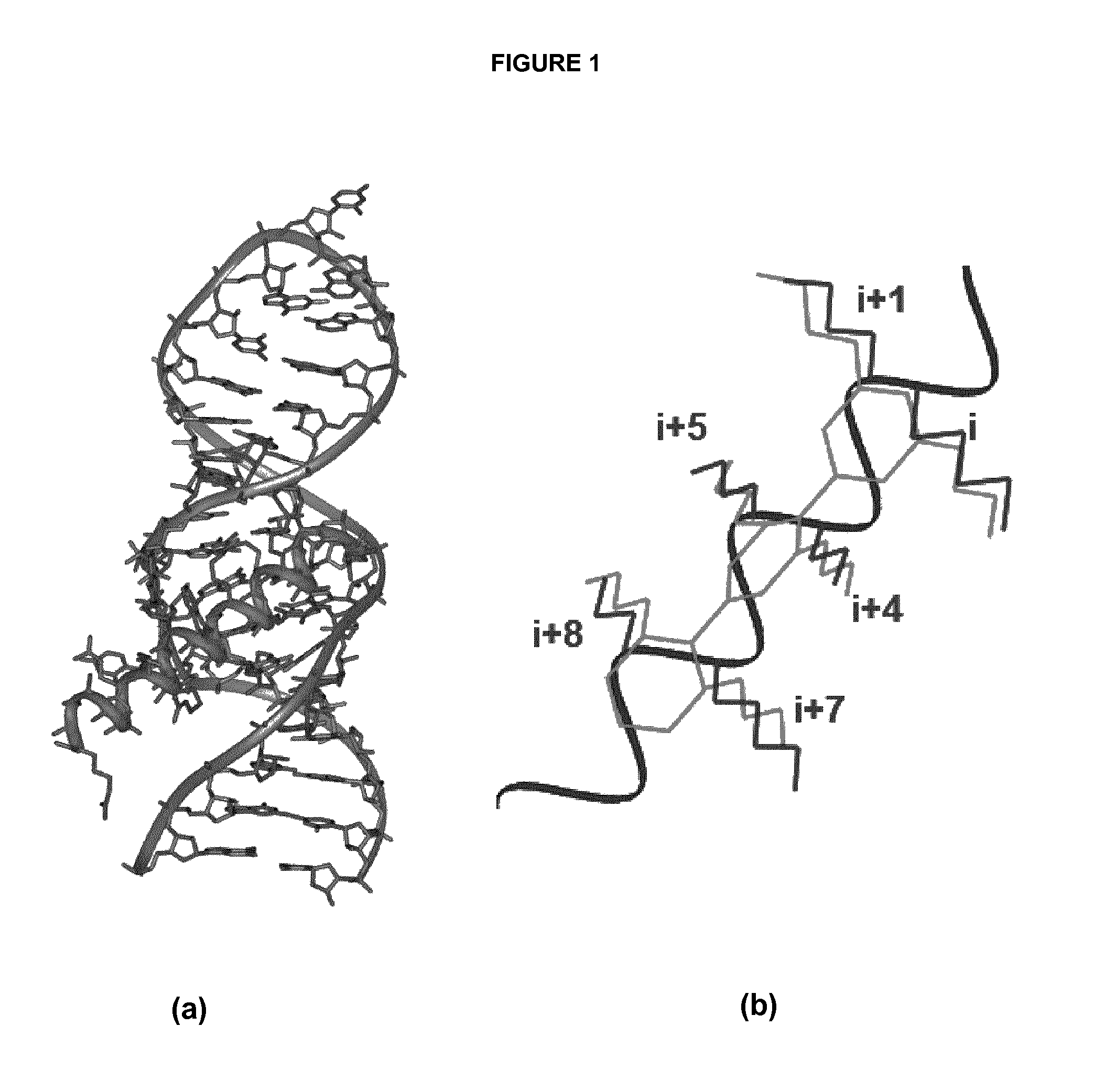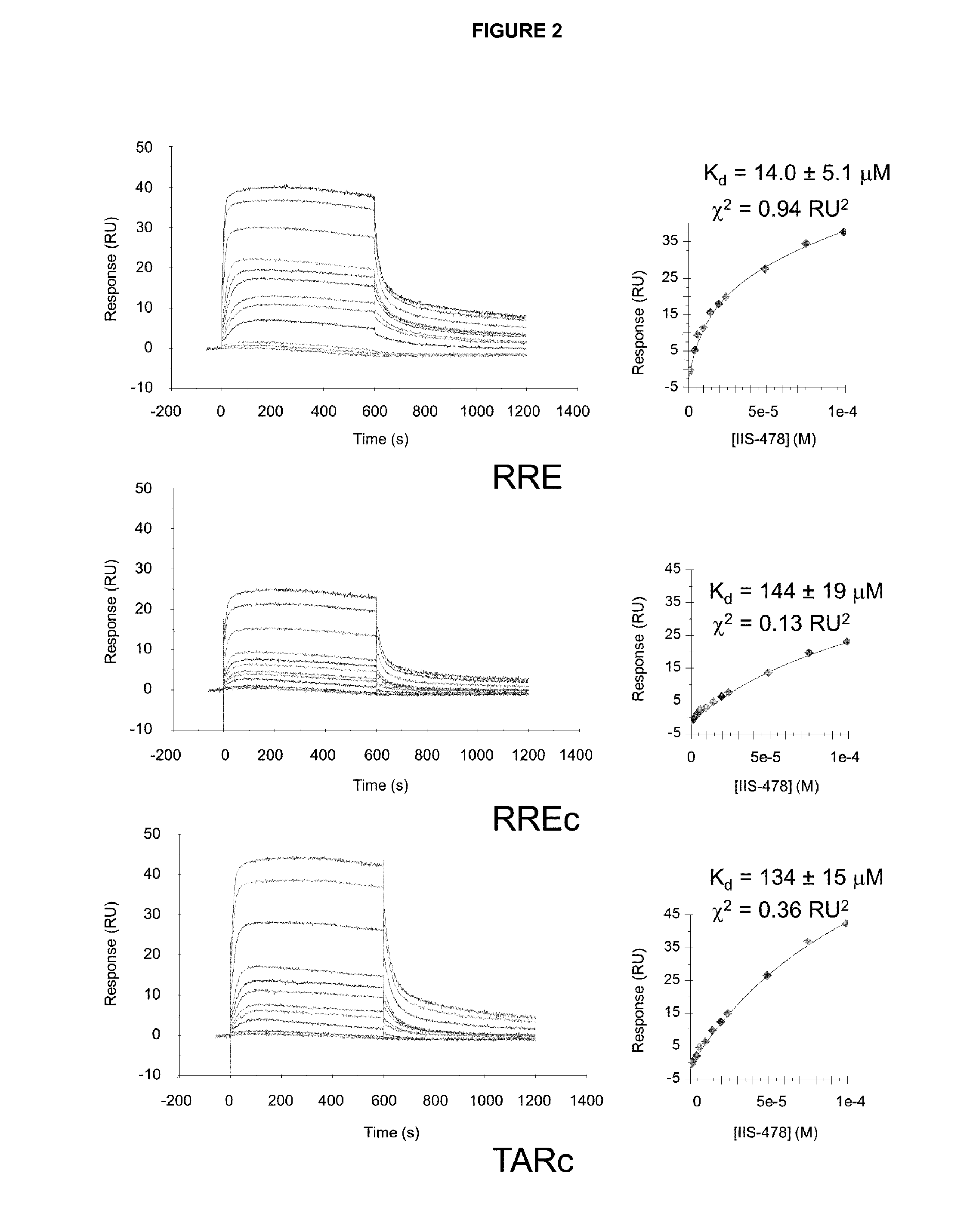Bilaterally-substituted tricyclic compounds for the treatment of human immunodeficiency virus type-1 (HIV-1) infection and other diseases
a technology tricyclic compounds, applied in the field of bilateral substitution of tricyclic compounds for the treatment of human immunodeficiency virus type-1 infection and other diseases, can solve the problems of slow resistance appearance, achieve slow resistance appearance, inhibit rre-rev interaction, and reduce the effect of cellular components
- Summary
- Abstract
- Description
- Claims
- Application Information
AI Technical Summary
Benefits of technology
Problems solved by technology
Method used
Image
Examples
example 1
Structure-Based Design of RRE-Rev Inhibitors
[0174]The conformational analysis of an hexa-substituted terphenyl molecule was carried out using the Merck MMFF94s force field(28) within the MOE software package (CCG Inc.). We systematically varied the two benzene-benzene torsions by 30° intervals and minimized the potential energy of the conformers. Biphenyl and terphenyl molecules containing different substitution patterns were docked into the 1ETF RRE structure(7) using the Dock 5.0 algorithm(29).
[0175]In order to obtain an improved model of RRE-terphenyl complexes, subsequent docking calculations were carried out using the Autodock 3.05(30) and Gold 5.0(31) programs, guided by restraints based on intermolecular NOEs observed by NMR spectroscopy. Based on the NMR data (FIG. 3), the binding site of the ligands was defined around nucleotide C20. An illustrative example of these calculations is shown in FIG. 4.
example 2
Preparation of RNA and Peptide Samples
[0176]The RRE RNA (SEQ ID No. 1) used in NMR spectroscopy and fluorescence polarization (FP) experiments was purchased from Dharmacon (Thermo Fisher Scientific Inc.), 2′-ACE de-protected, and purified following a procedure based on gel electrophoresis and dialysis. For the SPR experiments, 5′-biotin-RRE and two control 5′-biotin-RREc (SEQ ID No: 2) and 5′-biotin-TARc RNAs (SEQ ID No. 3) were purchased HPLC-purified from Microsynth AG and microdialyzed in HBS-EP buffer (10 mM HEPES pH 7.4, 150 mM NaCl, 3 mM EDTA and 0.005% (v / v) surfactant P20) prior to immobilization.
[0177]For the fluorescence polarisation experiments (FP), we used the peptide FITC-Ahx-GTRQARRNRRRRWRERQRAAAAR-amide (SEQ ID No. 5; identified as frevp), containing an FITC fluorophore bound to the N-terminal glycine (Genscript Inc.). This peptide contains the Arg-rich Rev34-50 residue tract forming the RNA-binding α-helix of Rev(21). For benchmarking the FP and SPR experiments, a s...
example 3
SPR Experiments
[0178]The Surface Plasmon Resonance (SPR) experiments were carried out at 25° C. with a Biacore T100 optical biosensor system, 4-channel streptavidin-derivatized Series S SA chips, and either 10 mM MES (pH 6.25), 150 mM NaCl, 1 mM EDTA and 0.005% P20 or 10 mM HEPES pH 7.4, 150 mM NaCl, 3 mM EDTA and 0.005% P20 aqueous solutions as mobile phases. After immobilizing approximately 300 response units (RU) of the RRE, RREc and TARc RNA hairpins on the chips, the compounds were injected during 10-minute periods at a flow rate of 20 μL / min and at concentrations generally ranging from 0.01 μM to 100.0 μM, and then allowed to dissociate for 10 more minutes. The RNA surfaces were regenerated with solutions containing 0.5 to 1 M NaCl and 10 to 100 mM NaOH, depending on the ligand.
[0179]RNA-ligand SPR equilibrium dissociation constants (Kd) were determined by fitting the sensorgrams to one-site or two-site equations:
[0180]RU=RUmax·C1+Kd·C+RIRU=RUmax1·C1+Kd1·C+RUmax2·C1+Kd...
PUM
| Property | Measurement | Unit |
|---|---|---|
| time | aaaaa | aaaaa |
| body weight | aaaaa | aaaaa |
| body weight | aaaaa | aaaaa |
Abstract
Description
Claims
Application Information
 Login to View More
Login to View More - R&D
- Intellectual Property
- Life Sciences
- Materials
- Tech Scout
- Unparalleled Data Quality
- Higher Quality Content
- 60% Fewer Hallucinations
Browse by: Latest US Patents, China's latest patents, Technical Efficacy Thesaurus, Application Domain, Technology Topic, Popular Technical Reports.
© 2025 PatSnap. All rights reserved.Legal|Privacy policy|Modern Slavery Act Transparency Statement|Sitemap|About US| Contact US: help@patsnap.com



